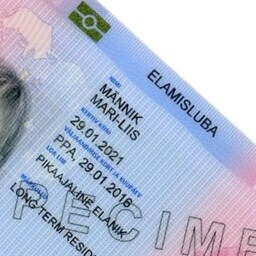As of September 1 of this year, 1,292,177 people were living in Estonia permanently. According to the law, the number of foreigners coming to Estonia must not exceed 0.1% of Estonia's population. The Ministry of the Interior has proposed that next year's immigration quota be set at 1,292 people.
The quota is six lower than last year because the population of Estonia has decreased. In the years 2016-2019, the temporary residence permit quota was fully utilized. However, in recent years, the situation has changed.
In 2023, 36 fewer residence permits were issued than the quota allowed. In 2024, this number was 126 fewer. As of September 1 of this year, 489 temporary residence permits remain unused from the quota.
At the same time, the number of applications for temporary residence permits has increased by 170 compared to last year. By September 1, people had submitted 4,885 applications. The increase was caused by applications for permanent residence in Estonia. These individuals are not subject to the quota.
By September 1, there were 1,479 applications for work permits, which is 458 fewer than last year. Applications for entrepreneurship also decreased: last year there were 70, this year 55.
The number of applications based on an international contract decreased. As of September last year, 19 applications were submitted, this year only five.
The number of temporary residence permit decisions has decreased compared to last year. In 2021 and 2022, over 9,000 residence permits were issued. In 2024, this number was 6,137, and as of September this year, it was 4,522.
As of September 1, out of Estonia's permanent residents, 138,840 were foreigners with long-term residence permits. 11,940 residents were EU citizens and their families.
The immigration quota helps regulate the number of foreigners coming to Estonia. There are many exceptions to the quota. For example, EU, USA, or UK citizens, spouses relocating, and individuals coming for studies or scientific work are not included in the quota. Additionally, startup employees, lecturers, top specialists, and major investors are not included in the quota.

